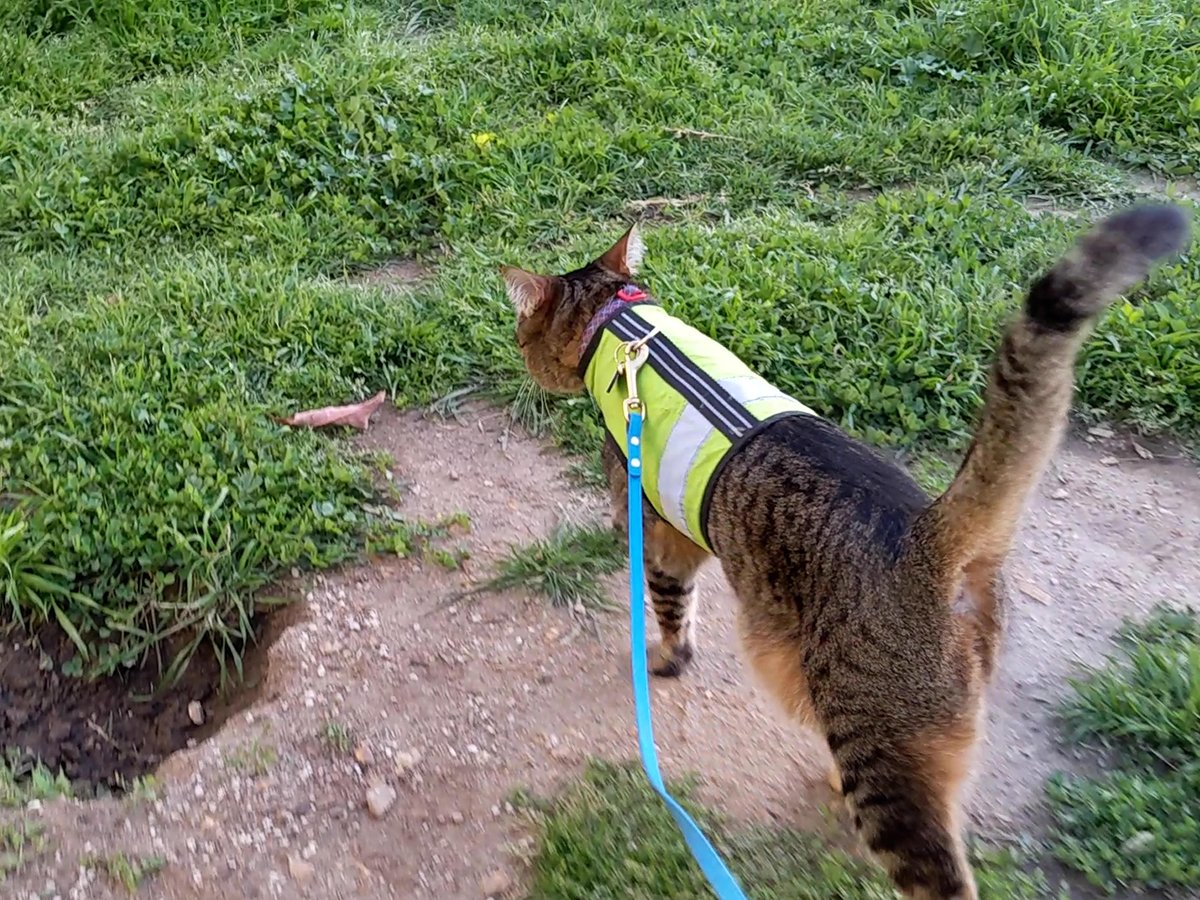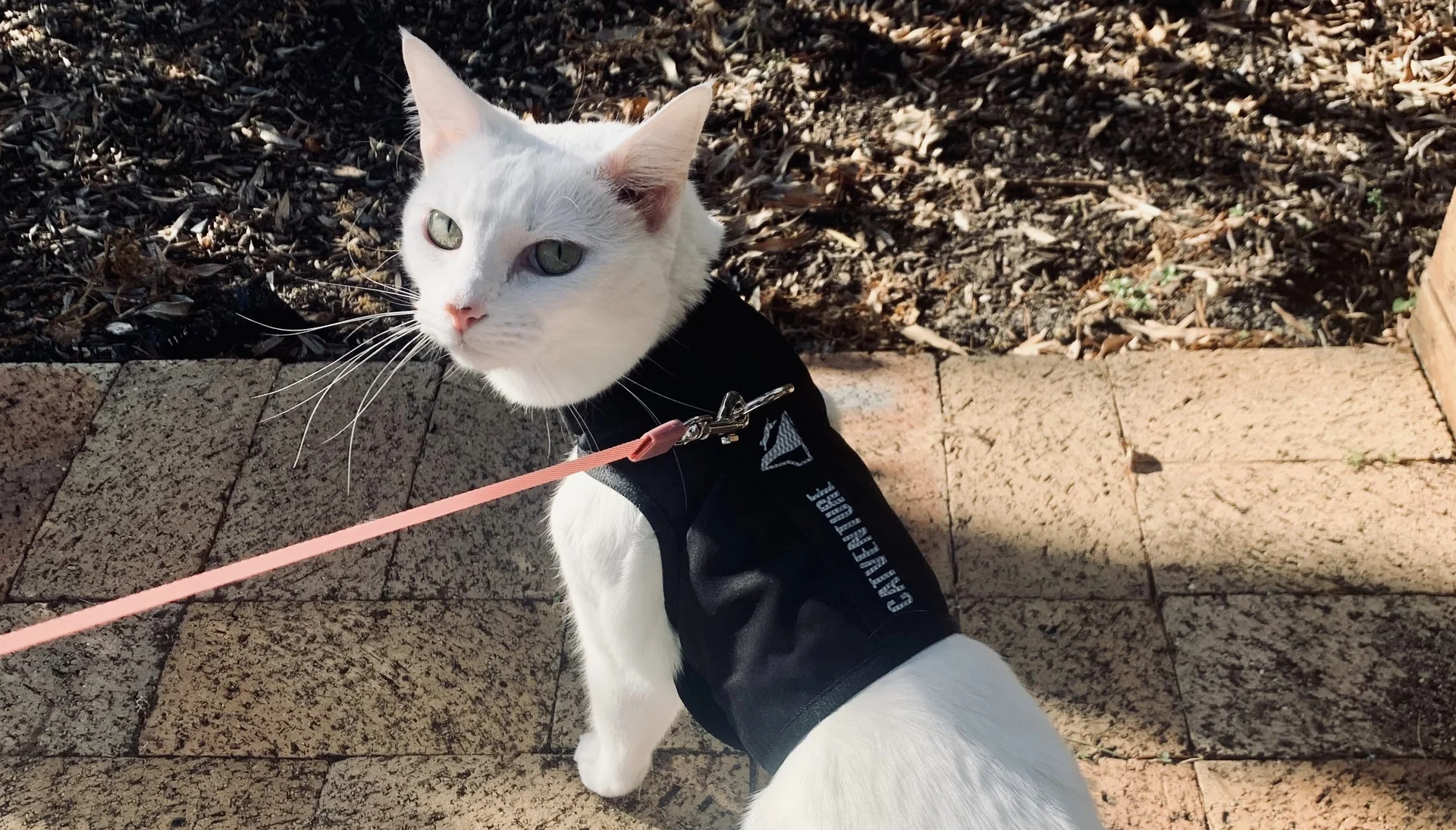Leash training isn’t just for dogs! More cat owners are discovering the benefits of taking their feline friends outside for safe, supervised walks. Whether you’re aiming for a relaxing stroll in the park or a safe outdoor experience, harness and leash training can provide your cat with exciting new adventures. Here’s everything you need to know about harness and leash training for cats.
Why Leash Train Your Cat?
1. Safe Outdoor Exploration
Leash training allows your cat to experience the outdoors without the risk of running off or getting into dangerous situations.
2. Physical Exercise
It provides a great way for indoor cats to get extra exercise, which is especially important for cats with limited outdoor access.
3. Mental Stimulation
Exploring new environments can provide significant mental stimulation, reducing boredom and destructive behavior.
4. Bonding Opportunity
Training your cat strengthens your bond, as it involves positive reinforcement and trust-building activities.
Choosing the Right Harness and Leash
1. Proper Fit is Crucial
Not all harnesses are created equal! A harness that fits well and is comfortable for your cat is key to a successful leash training experience. Look for:
- Adjustable straps to fit your cat snugly but not too tight.
- Soft material to avoid chafing.
- Secure clips that won’t come undone easily.
2. Leash Length
A shorter leash (3 to 4 feet) provides better control, while a longer leash allows your cat more freedom to explore.
3. No Collar, Only Harness
Collars can be unsafe for leash training, as they can slip off or cause discomfort. Always use a proper harness designed for walking.

Step-by-Step Guide to Leash Training Your Cat
1. Get Your Cat Used to the Harness
Introduce the harness slowly:
- Let your cat sniff it and get comfortable with its scent.
- Put the harness on your cat for a few minutes each day, gradually increasing the time.
- Offer treats and praise for positive associations.
2. Attach the Leash Indoors
Once your cat is comfortable wearing the harness, attach the leash and allow them to walk around indoors.
- Start with short sessions of just a few minutes, giving your cat time to adjust to the weight and sensation.
- Praise them for walking or sitting calmly while wearing the leash.
3. Practice Indoors Before Heading Outdoors
Take your cat around the house, walking them slowly and ensuring they are familiar with the motion of being led. This helps build confidence and reduces anxiety when transitioning to outdoor walks.
4. Start Outside in a Safe Area
Choose a secure, quiet outdoor area (like your backyard or a park with a fence) to begin your outdoor training:
- Let your cat explore at their own pace.
- Stay calm and patient, as it may take a few sessions for your cat to feel comfortable.
5. Gradually Increase the Walk Duration
As your cat becomes more accustomed to outdoor walks, gradually increase the time spent outside. Keep the experience positive by offering treats and praise.
Tips for Successful Leash Training
1. Be Patient
Cats are independent creatures, and they may take time to adjust to new things. Expect some resistance, and don’t force the harness or leash on your cat.
2. Go at Your Cat’s Pace
Allow your cat to explore their environment on their terms. Don’t pull them along or try to rush the walk. Let them lead the way!
3. Avoid Distractions
While you’re training, keep your cat in a quiet, low-distraction area to help them focus. Once they’re comfortable, you can try new locations with more stimulation.
4. Always Supervise
Never leave your cat unattended while on a leash, as there are risks of entanglement or injury if the leash gets caught on something.
5. Watch for Signs of Stress
Pay attention to body language. If your cat is crouching, tail flicking, or trying to hide, these are signs they may be stressed. Take breaks and try again later.
Common Challenges and Solutions
1. Resistance to the Harness
Some cats may dislike wearing a harness. Gradually desensitize them by associating the harness with positive experiences like treats or playtime.
2. Leash Pulling
If your cat is constantly pulling on the leash, use gentle redirection. Stop moving if they pull too hard, and wait until they calm down before proceeding.
3. Fear of the Outdoors
It’s common for cats to be hesitant about leaving the house. Begin in a familiar, controlled environment and let them explore at their own pace.
Harness and Leash Training: Is It Right for Your Cat?
Not all cats will enjoy leash walks, and that’s okay! Harness and leash training works best for curious and adventurous cats, but some cats may prefer to stay indoors. If your cat resists the harness or gets overly stressed during training, it might not be the best activity for them. Always prioritize their comfort and well-being.
Conclusion
Harness and leash training can be a fun and rewarding activity for both you and your cat. With patience and persistence, your cat can enjoy the sights, sounds, and smells of the outdoors in a safe and controlled manner. Whether it’s for daily exercise, mental stimulation, or just to satisfy their curiosity, leash training can open up a whole new world for your feline friend. Happy walking!




